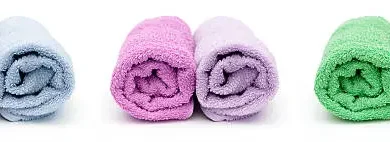Eco-Friendly Home Improvements: Sustainable Living Tips for Every Budget

As people around the world become more aware of environmental problems, more and more homeowners are looking for ways to live in a way that is good for the earth. Whether you’re considering hiring a plumber in Bolton for eco-friendly upgrades or exploring sustainable landscaping options like synthetic grass in Edmonton, making changes to your home can lower your carbon footprint, save you money, and improve your living environment. The good news? Making your home more eco-friendly doesn’t have to cost a lot of money. The following are useful and low-cost suggestions for making your home more eco-friendly, whether you want to make big changes or start with small ones.
1. For lighting that uses less energy, switch to LEDs.
One of the easiest and least expensive eco-friendly things you can do to your home is to upgrade its lights. Incandescent light bulbs use up to 75% more energy and burn out 25 times faster than LED lamps. Even though LEDs may cost a little more at first, the money you save on your energy bill and the fact that they last a long time make them a good investment for anyone.
2. Smart thermostats let you manage how much energy you use
Another cheap way to cut down on energy use is to install a smart thermostat. These gadgets change your heating and cooling on their own based on your plan and preferences, which saves you money on energy costs. Many of them even learn your habits over time to make sure that your home is always comfortable when you need it and not wasting energy when you don’t. Smart thermostats can cut your energy bills by a lot and lower your family’s carbon footprint at the same time.
3. Low-flow fixtures and rain barrels help save water.
Water is a valuable resource that can be easily saved by making a few small changes. Put in low-flow toilets, taps, and showerheads to save water without affecting how well they work. These features don’t cost much and can save you a lot of money on your water bills.
If you want to be more environmentally friendly outside, you could set up a rain barrel to collect water from your drains. You can water your garden or wash your car with this collected rainwater, which means you won’t have to rely on public water sources as much. If you’re looking to upgrade your garden or perform tree pruning in Bradford, consider utilizing rainwater for these tasks.
4. Solar panels are an investment that will pay off in the long run.
You have to pay more for solar panels up front, but they are one of the best ways to lower your energy bills and carbon footprint over time. Depending on where you live and how much energy you use, you might not have to pay for power at all. Installing solar panels is easier than ever because many places offer tax breaks and refunds for doing so.
If you are on a tight budget, solar-powered outdoor lights are a simple and cheap way to start using green energy around your home.
5. Insulation that lasts: Make sure your home uses less energy
Having good insulation is important for keeping your home warm while also cutting down on energy use. If you properly insulate your walls, floors, and attic, you can keep cool air in during the summer and keep heat in during the winter. This means you won’t have to use as much heating and cooling.
There are insulation choices that are better for the environment, like cellulose made from recycled paper or recycled denim. These materials work just as well as traditional ones. These eco-friendly options can help you make your home more energy-efficient while also being good to the world.
6. Green flooring: eco-friendly options for every style
If you want to change your floors, choose eco-friendly materials like bamboo, cork, or old wood. Bamboo grows quickly and can be used over and over, and cork can be collected without hurting the trees. Reclaimed wood brings old things to life again, which cuts down on the need to make new lumber. These eco-friendly flooring options last a long time, look good, and come in a range of prices to fit any income. Hiring a plumber in Bolton to upgrade your home’s water systems with eco-friendly solutions, such as low-flow fixtures, can further improve sustainability and water efficiency.
7. Composting: Turn trash into useful things
Composting is a great way to get rid of trash around the house and make your yard better. No matter how big or small your home or room is, there is a way to compost that will work for you. You can reduce the amount of trash you put in landfills and make soil that is good for your garden or flowers by composting food scraps and yard waste. A compost bin is a cheap purchase that helps you live a waste-free, circular life.
8. If you want eco-friendly paint, pick low-VOC or no-VOC items.
When you paint your house, pick paints that are low in VOCs or don’t have any at all. These choices lower the amount of dangerous chemicals that are released into the air. This makes the air inside your home healthier and less harmful to the environment. There are many eco-friendly paints on the market that come in many colors and finishes. This makes them an affordable way to make your home healthy.
9. Appliances that use less energy: Use less of them
When it’s time to get new home appliances, look for ones with an Energy Star grade that use less energy. These appliances use less water and energy, which saves you money on your bills and is better for the environment. As an initial purchase, energy-efficient appliances may be more expensive, but they will save you a lot of money and help the environment over the course of their lifetime.
10. Reusing and recycling materials can help you be creative and save money.
Using recycled or reclaimed products in home improvement projects can help the environment and save you money. Using old wood for furniture, tables, or floors can give your home a unique, rustic look and help reduce waste. Recycled glass can also be used for tiles, tables, or even in the garden. It’s likely that these materials will cost less than brand-new ones, and they will also help the environment.
11. Native landscaping is easy to care for and saves water
Use local plants that are naturally adapted to the weather and soil in your area to design your outdoor space. You will save time, money, and water by not having to use as much water, fertilizer, and chemicals when you landscape with native plants. In addition, it makes the area more biodiverse, which brings in birds and pollinators. Native plants are good for the environment and won’t cost you a lot of money because they don’t need much care to grow well.
Any budget can make eco-friendly changes to their home. It doesn’t matter if you make small changes, like moving to LED bulbs and low-flow fixtures, or big ones, like buying solar panels and insulation. You can all help make the future greener. Adopting these habits will not only help the environment, but it will also make your home better and cheaper for years to come. Living sustainably is a process, and every little bit helps!





